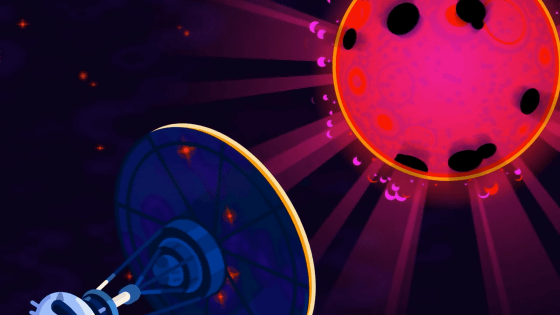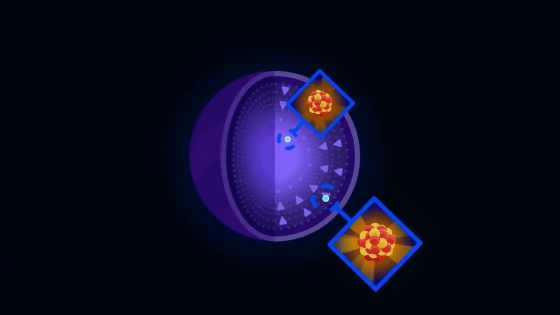What will happen at the 'end of the universe'?

There are countless stars and galaxies in the current universe, and it seems as if this state will continue forever, but one day the universe will come to an end.
The Last Thing To Ever Happen In The Universe - YouTube
The universe, which is said to have begun with the Big Bang , was an extremely hot place filled with hydrogen and helium gases.

After that, countless stars were formed in the universe based on gas. The gas that forms stars circulates, and even when stars die, they are used to form new stars.

However, as each new star forms, so does a type of star called

When a red dwarf dies, it transforms into a

Additionally, star formations such as neutron stars and black holes can trap gas forever.
In other words, the amount of gas remaining that can be used to form new stars gradually decreases, and eventually a time will be reached when no new stars will be formed.

It is said that over 90% of the stars that the universe can create have already been created.

Various celestial bodies will continue to coexist for hundreds of billions of years, but eventually planets and active stars will disappear, and eventually only red dwarfs will remain.

But it's still not the end of the universe.

A few trillion years from now, all the gas in the universe will be exhausted, and about 88% of the galaxy's mass will be white dwarfs, 2% will be neutron stars and black holes, and the remaining 10% will be gas giant planets and

White dwarfs are the remains of old stars and are about the size of Earth. However, it seems to have about half the mass of the Sun or more, making it the third densest object in the universe after neutron stars and black holes.

Its surface temperature can reach 150,000 degrees, much higher than the sun.

But white dwarfs are just dark, hot, and dense spheres that eventually lose heat and die. This will take at least 10 trillion years.

When a white dwarf cools enough to become as dark as the universe itself, it is called

Over vast amounts of time, all the objects in the galaxy are either ejected into the void or their orbits decay and are sucked into the black hole.

In a few quintillion years, all galaxies will evaporate and there will be no observable objects left.

However, there is a process that continues towards the end of the universe. For example, a black hole gradually loses energy due to

This will take an incredible amount of time, 10 to the 100th power.

Even if there were living organisms or machines that could survive by extracting energy from a black hole, their lives would end when the black hole disappears.

This is not the end of the universe yet. It seems that strange physical phenomena are occurring inside the black dwarf, which has already become unobservable from the outside.

A black dwarf is a celestial body about the size of the Earth and weighs about the same as the sun.

However, its surface temperature is so low that it approaches absolute zero.

Normally, it would not be able to maintain the mass of a star. Despite this, there is a reason why black dwarfs retain their shape rather than becoming black holes.

Deep inside a black dwarf, matter is compressed to a density millions of times greater than objects found on Earth.

The pressure is so high that the electrons cannot even combine with the nucleus to form atoms. Instead, pressure traps the atomic nuclei in a rigid lattice, and the electrons form a plasma between them. It is said that these electrons are what holds the star together.

It is explained that black dwarfs are able to maintain their shape because electrons exposed to pressure push back against gravity, much like people on a crowded train hold their ground to avoid being crushed.

Furthermore, inside a black dwarf, the process of atomic

There is a gap of billions to trillions of years between one reaction and the next, but the bonding of atomic nuclei steadily progresses over a long period of time.

It takes 10 to the 100th power for a black hole to die, but compared to the process by which black dwarfs create atoms, this is not a long time.

Over an absurd amount of time, the black dwarf's atomic nuclei become heavier atoms through repeated fusion. Eventually,

Nickel-56 is an unstable atom, so it will eventually decay into iron. At this time, it emits

Positrons collide with electrons and cause

As a result, the number of electrons that support a black dwarf like a crowded train will gradually decrease.

Black dwarfs are gradually replaced by iron balls, and at the same time they lose the electrons that support them.

After more than 10 to the 1000th power, the black dwarf finally exceeds its ability to support its own mass.

Eventually, the black dwarf collapses, emitting a galaxy-like glow.

This is said to be 'what will happen at the end of the universe.'

Of course, this is a far-fetched story, and for now space is a safe place for life on Earth to live.

Related Posts:







